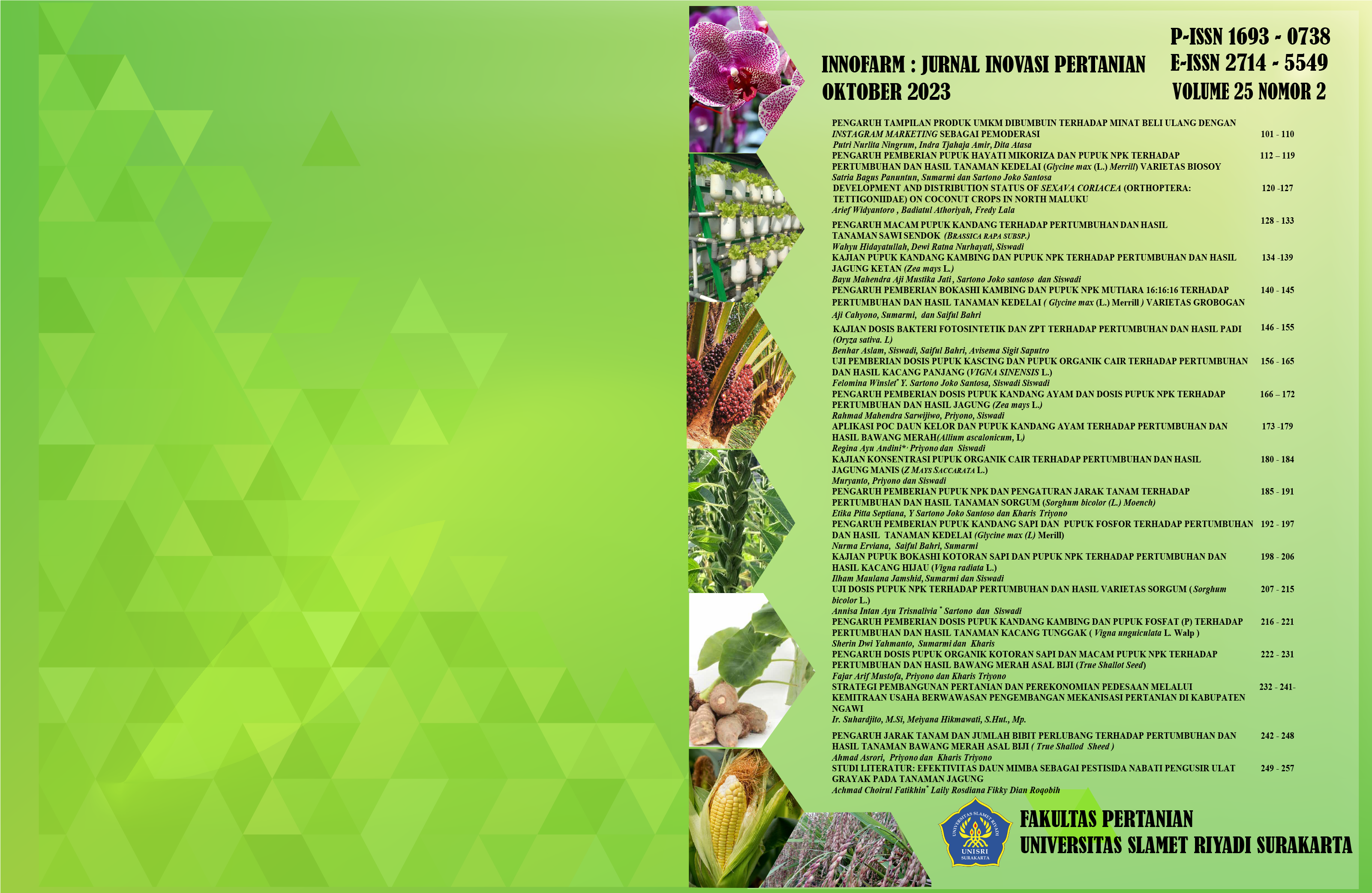NPK fertilizer dose test on growth and yield of sorghum varieties
Numbu variety sorghum, Kawali variety sorghum, NPK fertilizer
DOI:
https://doi.org/10.33061/innofarm.v25i2.9602Abstract
This research aims to test the best NPK fertilizer dose on sorghum varieties' growth and yield (Sorghum bicolor L.). The research design used is a Complete Randomized Group Design (RAKL) arranged in a split plot consisting of 2 factors, two factors as follows: Factor Type of Sorghum Plant Variety as the main plot, which consists of 2 varieties as follows: V1 = sorghum variety Numbu and V2 = sorghum variety Kawali. The second factor is the Dosage of NPK Fertilizer as a subplot, which consists of 5 levels as follows: N0 = 0 g NPK Fertilizer Dose (Control), N1 = 1.5 g NPK Fertilizer Dose, N2 = 3.0 g NPK Fertilizer Dose, N3 = 4.5 g NPK Fertilizer Dose, N4 = 6.0 g NPK Fertilizer Dose. The parameters observed were height of plant, number of leaves, fresh weight of stalks, dry weight of stalks, number of panicles per plant, weight of panicles per plant, number of seeds per panicle, and weight of grains per panicle. The results showed that the application of Pak Tani NPK fertilizer with a dose of 250 kg/ha (3.0 gr/plant) gave the best results in sorghum variety Numbu (V1) can be seen in the observation of plant height eight weeks after planting with an average of 188.22 cm, fresh weight of stalks with an average of 949.92 gr and dry weight of stalks with an average of 224.36 gr. The best results in the Kawali variety (V2) can be seen in the observation of the importance of panicles per plant, with an average of 104.84, the number of seeds per plant, with an average of 1961.22 and the weight of seeds per plant with an average of 93.73.
Downloads
Published
Issue
Section
License
Copyright (c) 2023 ANNISA INTAN AYU TRISNALIVIA, Sartono Joko Santosa, Siswadi Siswadi

This work is licensed under a Creative Commons Attribution-NonCommercial 4.0 International License.
Authors who publish this journal agree to the following terms:
- Authors retain copyright and grant the journal right of first publication with the work simultaneously licensed under a Creative Commons Attribution License that allows others to share the work with an acknowledgement of the work's authorship and initial publication in this journal.
- Authors can separately make additional contractual arrangements for non-exclusive distribution published by the journal (e.g., publish it in a book), with an acknowledgement of its initial publication in this journal.
- Authors are allowed and encouraged to send their work via online (e.g., in the institutional repositories or their website) after published by the journal.


















